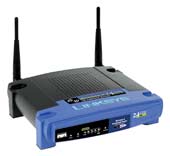Contents
Quality of Service
by Scott WestQuality of Service (QoS) is a technique that strives to ensure a fair distribution of resources throughout a network. The main application of QoS is on networks where it is important that all members receive a fair share of the throughput. For example, an internet service provider (ISP) would likely utilize such a system to some degree.
However, there are disadvantages to this technology. For example, it does raise the question of which protocols and users get the higher priority for resources on the network. Additionally the computing power to analyze the packets and throttle the speeds are greater for QoS techniques, in general [1].
The Problem
Often times, different network applications have different resource requirements. Some applications operate in real-time and require a higher share of the available bandwidth, such as VoIP communications. [2] Other software only requires small bursts of bandwidth, such as web browsers. Quality of Service manages different application requirements by modifying the priority they have on the network.Solutions
To make these varying types of applications coexist peacefully, sometimes modificaitons to the default network operation must be made. This is the essence of QoS. For example, a VoIP application requires a certain level of constant network resources for the experience to be pleasant for the user. To attain this, a network employing QoS techniques may give VoIP applications higher priority. [3] There are various ways to determine what priority a packet has. They include:- interface matching - traffic coming in on a certain interface
- MAC matching - traffic originating from some MAC address
- IP matching - traffic originating from a certain IP address
- application matching - traffic is analysed and categorized based on packet content
Cisco Systems
Cisco Systems produces enterprise and commercial grade networking products. When searching for a QoS solution for a mid or large scale operation, Cisco is one company which can offer appropriate equipment. One such product, Cisco AutoQoS, is able to operate accross large networks, interacting with other such routers. AutoQoS also includes an automatic discovery ability, that will generate a QoS policy based off network traffic.Linksys WRT54G

Linksys WRT54G Wireless Router
However, due to the nature of the open source components that are used in the construction of the WRT54G, there are alterantive firmwares that can offer more features. They include DD-WRT and OpenWrt , which are both free to use. There there are many other alternatives also available.
Case Study

Jim's service is slow, while Bill's is fantastic!

Jim's happy, but now Bill's downloads are miserable...
After a while, Jim starts to notice that web-pages are loading very slowly. He realizes that Bill's usage of the network is leaving little resources for his needs. One method to deal with this is a very naive form of QoS. Jim goes into the routing computer and limits Bill's transfer speeds by the MAC address of his network interface. Jim doesn't like this, because now all of his operations are slower.

Using a Layer7 filter, Jim and Bill both have great service!
So, Jim installs the L7-Filter package on his routing computer. The L7-filter is a software package that is able to pattern match IP packets, and create rules on how they should be handled. This suits Jim's needs perfectly! Jim sets the router up to intercept all BitTorrent traffic and filter it into a different level of service. Now the network still operates with reasonable efficiency and still allows Bill to download his episodes; you know, the one where Lucy has a crazy scheme to make money off of pies...